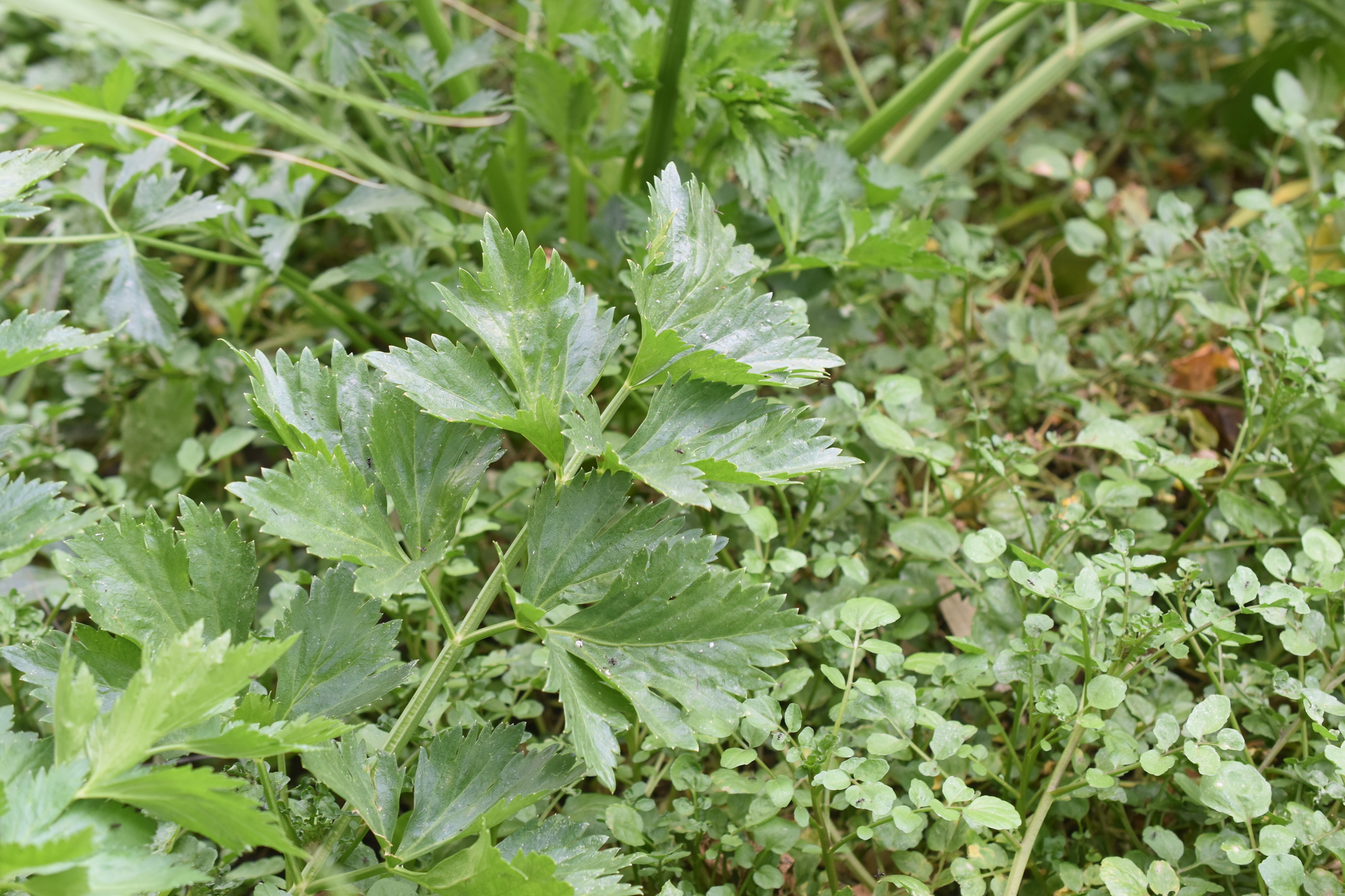
Biennial herb to 1m tall with ribbed stems and a characteristic aroma. Leaves usually pinnate, the upper ones smallest. Leaflets 3-5, ovate-cuneate and each 3-lobed with rounded to pointed teeth on the margin. Flower clusters 3-4 cm wide with 4-8 rays; spring to summer. Flowers white. Fruit broadly ovoid, 1.5-2.5 mm long, the segments with 5 ribs.
Europe
Of Australia's celery crop, 80% is grown in Vic - with growers located close to Melbourne and in the SE metropolitan area - and Qld - in Toowoomba, the Lockyer Valley District and metropolitan Brisbane.
var. dulce (Mill.) Pers., Celery. This variety is the familiar commercial plant grown for the blanched leaf stalk bases eaten raw or cooked; it is a good source of Vitamin C. Cultivars listed include: 'American Stringless', 'Golden Self Blanching', 'Green Giant', 'Slow Bolt Early', 'South Australian White' and 'Tendercrisp'.
var. rapaceum (Mill.) Gaud.-Beaup., Celeriac (Turnip-rooted Celery), has a thickened edible root.
There is another leafy variety, sometimes referred to as Smallage or Soup Celery, which is used for flavouring. Both stems and leaves are eaten.
Source: (2002). Apiaceae. In: . Horticultural Flora of South-eastern Australia. Volume 4. Flowering plants. Dicotyledons. Part 3. The identification of garden and cultivated plants. University of New South Wales Press.
